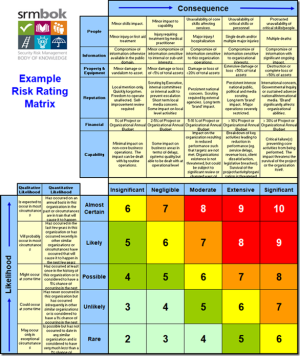 People refer to critical thinking but rarely define what they mean. People may think they are critical thinkers but are often constrained by ambitions, politics, debt and social structures. In the world of risk and safety where compliance rules and obedience is privileged over all, critical thinking is generally discouraged.
People refer to critical thinking but rarely define what they mean. People may think they are critical thinkers but are often constrained by ambitions, politics, debt and social structures. In the world of risk and safety where compliance rules and obedience is privileged over all, critical thinking is generally discouraged.
I get hosts of emails from people who identify with the sentiments of what I write and encourage me to keep going amidst their own personal struggles against dehumanizing, bullying and authoritarianism in their workplace. Often these people comment that they can only think critically in private. Any criticism of zero or popular safety ideas are smashed, they face the sack. Most comments of support that arrive in my inbox come from gmail accounts.
There is no mention of Critical Theory or critical thinking in the AIHS BoK as a foundation for effective safety work.
I have written about critical thinking previously (https://safetyrisk.net/the-need-for-critical-thinking-in-safety/) but what skills are implied when we speak of ‘critical thinking’. Here are some suggestions.
· The most important skill in critical thinking is developing a sensitivity to power and power-relations. When we deliver the iThink module (https://cllr.com.au/product/ithink-critical-thinking-dialectic-and-risk-unit-12/) and the Social Politics Module (https://cllr.com.au/product/the-social-politics-of-risk-unit-14/), this is where we start. Most people have no idea of the 10 forms of power and have never work through how they work (https://safetyrisk.net/politics-and-power-in-safety/).
· The second skill in critical thinking is discernment of trajectories. This means cultivating a way of thinking that can envision (https://www.humandymensions.com/product/envisioning-risk-seeing-vision-and-meaning-in-risk/) where things are going. You don’t have to be a magician to realize that the mantra and ideology of zero that denies fallibility is on a trajectory of brutalism. You don’t have to be Einstein to work out that language of ‘all accidents are preventable and ‘safety is a choice you make’ leads to victimization, blaming and bullying.
These two skills alone will soon have you isolated as a political maverick in any tier 1 organisation. And all the talk of rescuing organisations from bullying cultures, harassment and sexual harassment is meaningless unless one seeks to do something about the foundations of these problems. How naïve to think an ambulance at the bottom of the cliff is better than a fence at the top. How strange to preach about bullying and harassment cultures and then do nothing in the AIHS BoK or OHS curriculum on critical thinking.
· The third most important skill in critical thinking is a disposition of questioning (https://safetyrisk.net/critical-thinking-and-questioning-in-safety/). Learning to ask critical questions doesn’t come naturally, it has to be learned and practiced. Effective questioning is also more dispositional than definitional (https://safetyrisk.net/questioning-skills-and-investigations/). Questioning positional power and institutionalized power is never popular, particularly when positions are politicized and invested with substantial fortress Mentalitie. Such questioning doesn’t require interrogation but rather open questioning that shines a Transdisciplinary torch on positions and assumptions behind positions. This is why the singularity of Behaviourism in safety is so dangerous (https://safetyrisk.net/the-curse-of-behaviourism/ ). It represents only one aspect of human personhood and then makes such a distortion the whole. Such an anthropological disposition supports the kind of bulling and harassment Safety is trying to address. Bullying and harassment in safety will continue to be normalized as long as behaviourism and zero are made safety orthodoxy.
· The fourth skill in critical thinking is connected to an ability to sift, analyse, compare and contrast the trajectories of various positions. This involves the ability to make connections between discourse (language in use) and Discourse (the power embedded in language). Sometimes people tell me how amazed they are at getting the sack and when we trace back events we can see the writing on the wall. There is no such thing as an innocent, objective or non-political question. Those with vested interests understand all questioning as loaded and a threat to their ruling hegemony. All questioning must be quashed in the ruling club and compliance must be equated to friendship and a condition of acceptance in the club.
There are of course many more skills in critical thinking that could be discussed but for the purposes of this blog this may do. One thing one should avoid is the many supposed courses on critical thinking that espouse critical thinking as just cognitive and reasoning skills. This is not critical thinking but just a way for developing an apologetic for validating one’s position.
· Transdisciplinary is an essential aspect of critical thinking (https://safetyrisk.net/transdisciplinarity-and-worldviews-in-risk/). One needs to engage with others in worldviews completely outside of your comfort zone to enhance critical thinking. This is why the best reading in safety is not with books on safety.
When one’s body of knowledge and curriculum simply continues to confirm the science-engineering worldview of risk then all this does is keep the conversation in risk to repetition and confirmation bias. Such mechanisms then become politicized and put critical thinking at risk. Unless one can step outside of the orthodoxies of risk and safety one is not likely to come across anything that will shake foundations and challenge confirmations.
This is why this blog site stands out across the safetyosphere. Far from being anti-safety, this blog site is more needed than ever and stands as a challenge to the comforts of safety orthodoxy that is happy to lay the foundations for dehumanisation, bullying and harassment in its love of zero (https://www.humandymensions.com/product/for-the-love-of-zero-free-download/ ), numeric, metrics and objects. Compliance to orthodoxy more then anything puts critical thinking at risk.



Rob Long says
When making sausages it’s important to keep to the same template and fill it with shlock. Nothing better than a safety BBQ.
Bernard Corden says
The silence, pseudo-academic cowardice or obedience to the orthodoxy from our peak safety bodies, public serpents and many other gutless panjandrums substantiates their complicity.
A disenfranchised and silent population is the ultimate aim of every despot, who uses the suppression of human rights to a free voice as a political weapon. Indeed, all it takes for evil to prevail is for good people to do nothing.
Change from the inside via superficial peak safety bodies and membership of fiefdoms such as the IOSH, AIHS and the NSCA seldom works.
Attempting to tear or knock down walls from the inside merely gets you a few bumps on the head with an annual invoice and provides you with some meaningless post nominals.
Their furtive recruitment crusades often remind me of the old LBJ comment about Edgar Hoover……”I’d rather have him inside the tent pissing out than outside the tent pissing in.”